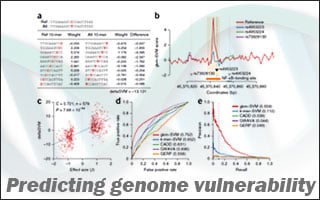Enhanced OCT tissue-mapping technology for safer brain cancer removal

A major challenge in surgically removing tumors, particularly in the brain, is to cut out as much cancer as possible while leaving healthy tissue intact. Currently available imaging tools to aid doctors during brain surgery, such as low resolution ultrasound, and time-consuming and expensive MRI, do not provide continuous guidance.
A Johns Hopkins research team, led by Xingde Li, PhD, professor of biomedical engineering, has been working to further expand optical coherence tomography (OCT) technology — first developed in the early 1990s for imaging the retina — to organs beyond the eye. OCT produces high resolution images using lightwaves without delivering ionizing radiation to patients. Team member, Carmen Kut, an MD/PhD student working in Li’s lab, thought OCT might provide a solution to the problem of separating brain cancers from other tissue during surgery.
The researchers figured out that brain cancer cells lack “myelin sheaths” that coat healthy brain cells. Using this brain cancer OCT “signature,” the team devised a computer algorithm to process OCT data and, nearly instantaneously, generate a color-coded tissue map — displaying cancer in red and healthy tissue in green.
“We envision that the OCT would be aimed at the area being operated on, and the surgeon could look at a screen to get a continuously updated picture of where the cancer is — and isn’t,” Li says.
“So far the team has tested the system on fresh human brain tissue removed during surgeries and in surgeries to remove brain tumors from mice,” say Carmen Kut. The researchers hope to begin clinical trials in patients this summer.
Alfredo Quinones-Hinojosa, MD, a professor of neurosurgery, neuroscience and oncology at the Johns Hopkins University School of Medicine, and the clinical leader of the research team feels that if those trials are successful and the system goes to market, it will be a big step up from imaging technologies now available during surgeries. Quinones-Hinojosa stated, “Ultrasound has a much lower resolution than OCT, and MRI scanners designed to be wheeled over a patient on the operating table cost several millions of dollars each — and require an extra hour of operating room time to obtain a single image.” By comparison, the team anticipates that the cost of an OCT-based system would run in the hundreds of thousands of dollars.
And, this technology has the potential to be adapted to detect cancers in other parts of the body, Kut says. She is working on combining OCT with different imaging techniques/algorithms that would detect blood vessels to help surgeons avoid cutting them.
A summary of the research appears June 17 in Science Translational Medicine. Other authors on the paper are Kaisorn L. Chaichana, Jiefeng Xi, Shaan M. Raza, Xiaobu Ye, Elliot R. McVeigh and Fausto J. Rodriguez, all of The Johns Hopkins University.
